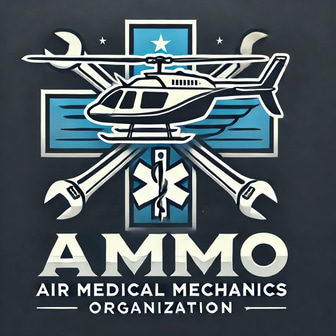Disclaimer: The information provided is for general informational and educational purposes only. Nothing contained herein shall be construed as guidance for, or a basis of, compliance of any regulatory or certification standards. This information must not be used as the sole basis for the certification, inspection, repair, modification, or return to service of any aircraft, product, or component. Users are responsible for consulting appropriate, approved technical data, regulatory authorities, before performing any maintenance, modification, or return-to-service actions.
Helipad and Airfield Infrastructure Advisory Circulars (ACs) and FAA Guidance
Helipad and Heliport Design Standards
Design and Construction of Heliports
AC 135-4A – Provides guidelines for the construction and maintenance of helipads used in Part 135 operations. It covers site selection, lighting, obstacle clearance, and surface material requirements to ensure safe helicopter takeoff and landing operations.
AC 150/5300-14B – Establishes FAA heliport design criteria, including recommendations for FATO (Final Approach and Takeoff areas), TLOF (Touchdown and Liftoff areas), and safety zones. It ensures safe and efficient operations at private and public-use heliports.
AC 150/5320-15A – Focuses on pavement design for heliports, taxiways, and aprons. It provides load-bearing capacity guidelines, drainage considerations, and recommended surface materials for helicopter operations.
Airfield and Helipad Safety Equipment
Aircraft Rescue and Firefighting (ARFF) Equipment
AC 150/5220-18A – Covers Aircraft Rescue and Firefighting (ARFF) equipment standards for airports and heliports. It includes requirements for fire extinguishing agents, response vehicles, and operational safety measures to mitigate emergency risks.
Marking and Lighting for Helipads and Airports
AC 150/5220-20 – Provides guidance on airport ground vehicle operations and markings to enhance airfield safety and prevent runway incursions. It includes recommendations for visual aids, surface markings, and driver training requirements.
AC 150/5230-4A – Establishes best practices for airport fueling operations and fuel quality control. It includes fuel handling procedures, safety protocols, and training requirements for personnel working with aviation fuel at airports and heliports.
Airfield and Helipad Electrical Systems
Airfield Lighting and Navigation Aids
AC 150/5345-12E – Covers FAA requirements for airport and heliport lighting systems, including runway edge lights, taxiway lights, and approach lighting systems. It ensures compliance with ICAO and FAA visibility standards for night and low-visibility operations.
AC 150/5345-27D – Provides guidance on aircraft radio control of airport lighting (ARCAL) systems. It establishes pilot-controlled lighting (PCL) standards for remote and unattended airports and heliports.
AC 150/5345-50B – Details specifications for precision approach path indicators (PAPI) and visual approach slope indicator (VASI) systems. These lighting aids assist pilots in maintaining proper descent angles during approach and landing.
Airfield Pavement and Surface Maintenance
Pavement Condition and Maintenance Best Practices
AC 150/5380-5B – Focuses on pavement maintenance programs for airports and heliports. It provides techniques for evaluating pavement conditions, repairing cracks, and extending the lifespan of runways, taxiways, and helipads.
© 2024. All rights reserved.
Disclaimer: The information provided by the Air Medical Mechanics Organization (AMMO) is for general informational and educational purposes only. It has not been reviewed, approved, or accepted by the Federal Aviation Administration (FAA), any Organization Designation Authorization (ODA) holder, Type Certificate (TC) holder, Supplemental Type Certificate (STC) holder, or any aircraft or component manufacturer.
Nothing contained herein shall be construed as guidance for, or a basis of, compliance with FAA regulations, manufacturer-approved data, type certificate or supplemental type certificate requirements, or any other regulatory or certification standards. This information must not be used as the sole basis for the certification, inspection, repair, modification, or return to service of any aircraft, product, or component.
Users are responsible for consulting appropriate, approved technical data, regulatory authorities, and manufacturer guidelines before performing any maintenance, modification, or return-to-service actions. AMMO assumes no liability for the use or misuse of any information provided
